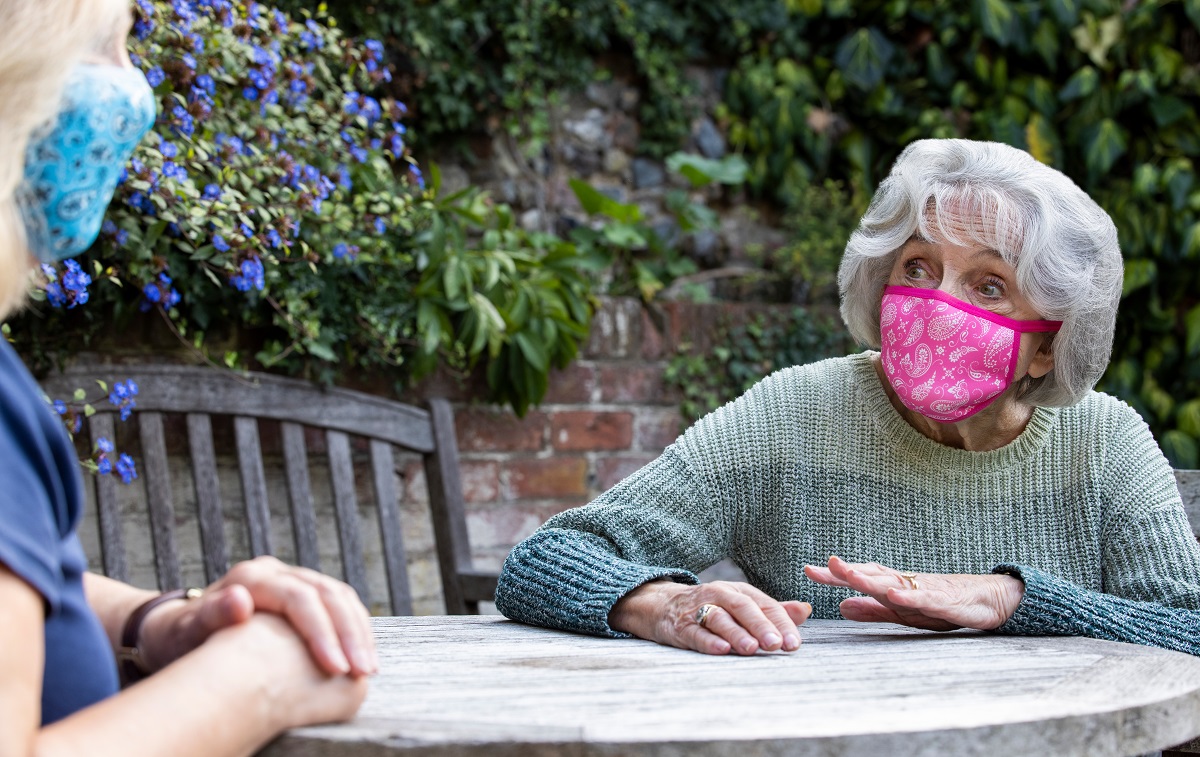One of the key ways to help someone with dementia stay in their own home for longer is to make their furniture and home feel more comfortable and easier to navigate, particularly if they’re having mobility problems. The areas of the brain that control co-ordination and balance can be affected by dementia which is why mobility can become an issue. Suddenly, getting up out of a chair becomes a lot trickier (and particularly so if they have other health conditions such as arthritis or stiff joints). However, there are many products that can help people in this position, ensuring they’re able to maintain some independence and comfort within the home.
Seating
Your dilemma:
You care for someone with dementia who spends a lot of time indoors, and doesn’t have quite the same mobility as they used to have, particularly when sitting down and getting up out of chairs. They want a living environment that is as comfortable and supportive as possible.
Products to help:
– Rise and recline chairs
These are chairs that have moveable sections that let you recline the back of the chair, and push out the front so that you can lean back and put your feet up. They can be extremely comfortable and ideal if the person you care for is prone to napping or falling asleep in their chair. You can also get dual motor riser recliner chairs, which means that they can also tilt up and forwards, to help those who struggle to get up from their chair.
– Sofas
Most sofas you would buy normally have a very low seat base, which can make getting into and out of them difficult. However, it is possible to buy sofas that are a standard seat height (usually 46cm or over) and have firmer cushions, which makes it easier.
– High backed chairs
Providing support for your back and head is also important if you’re elderly, so high back chairs are useful.
– Rising seats and aids
Rising seats are mechanical chairs that use a motor to raise the seat in a chair so that someone with limited mobility is able to stand more easily. They can be part of the chair, or added as a seat base or cushion to an existing chair.
– Chair risers
If you’re reluctant to get rid of a favourite armchair, you can adjust its height by adding chair risers to the feet. These are sturdy blocks that are fitted to the bottom of a chair to raise it up, usually between four and 10 cm in height. They’re a simple product that requires minimal upheaval, but can make the difference between someone being able to safely step up from a seated position, or finding it impossible.
– Pressure care seating
Elderly skin can become more sensitive, especially if the person you care for spends a long time in one position. Using pressure care seating helps to spread the pressure of weight evenly, to reduce the risk of sores.
These products are good for:
Making the person you care for feel relaxed, calm and contented, by providing a comfortable environment to sit in.
Tables
Your dilemma:
The person you care for spends a fair amount of time in bed or in a chair, but likes to be able to carry on with activities to keep them busy. They need a table that provides easy access to a flat space.
Products to help:
– Over bed tables
These are tables that are specially designed for placing over the bed – similar to what you might have in a hospital, so you can rest food or do activities on them.
– Chair tables
These are tables that are specially designed for placing around a chair so you can rest food on it or do activities on it.
– Work tables
These are larger, sturdier tables that are ideal for doing activities on, such as big jigsaws, indoor gardening or building model planes.
– Bedside tables
An ideal bedside table is one that is at the same height as your bed, so you can easily reach over to pick things up from it.
These products are good for:
Helping you to continue doing activities, whether you’re in a chair or in bed.
Top tip
Some tables can be angled so that they have a slight tilt, making them ideal for resting reading materials on so you don’t have to hold them up, or for doing art work on.
Beds
Your dilemma:
The person with dementia is spending increasing amounts of time in bed, largely because of limited mobility, so you want to make the sleeping environment as comfortable as possible.
Products to help:
– Profiling beds
These can be useful for someone who is bedridden, as they can move from lying down to sitting up at the touch of a button. Special motors will move the mattress slats into different positions, which let you raise your head, feet or both. They can be useful for pushing you up into a position which is then easier to get out of bed from.
– Mattresses
A comfy mattress is the key to a comfortable bed, and there’s a range of ones out there. You can get mattress toppers, which are thin but extremely soft mattresses which you place on top of your regular mattress to increase comfort. There are also adjustable mattresses, which are needed for profiling beds, pressure mattresses to help those affected by pressure sores, and memory foam mattresses, which mould to the contours of your body.
– Bed risers
Similar to chair risers, bed risers work by fitting under the legs of a bed to raise it a few inches off the ground. They can help people who struggle to get up from their bed because of stiffness or mobility issues.
These products are good for:
Providing a comfortable environment to encourage sleep in someone with dementia, particularly important if their sleep has been disturbed due to their condition.
Good to know:
As well as bed risers, you can set up a rail next to the bed to help someone with dementia pull themselves up into a standing position.
Storage
Your dilemma:
The person you care for struggles to remember where things are kept, so you want to be able to provide them with furniture that is easy to open and see its contents.
Products to help:
– Wardrobes
Too much choice can be overwhelming for someone with dementia, so if they become anxious at the prospect of what to pick out of their wardrobe to wear each day, it can be useful to have one section which is open to the user and where there are only a few choices of outfits. That way, they can easily pick something out to wear. Similarly, if one of the wardrobe doors is clear, it lets the person see that there is a small selection of clothes for them to pick out.
– Living room storage
Filling one or several boxes with products and activities that the person you’re caring for enjoys using regularly, is a useful way to stay organised whist ensuring stimulating activities are always accessible. Chose bright colourful boxes or see-through plastic containers so you spot what item you want easily.
– Chest of drawers
These can be useful for reminiscence and to prevent boredom. Place an item that triggers a memory in different drawers and let the person with dementia look through them.
– Dressers
If the person you care for enjoys looking at old photographs, items or knick-knacks, you can give them a pride-of-place display spot in the living room with a dresser.
These products are good for:
Aiding organisation, helping someone find what they need or want easily and providing a place to encourage reminiscence.
Good to know:
Rummage boxes or bags are a very useful activity for someone with dementia. Try keeping one in drawers or dressers and place items that need ‘sorting’ inside it. For example, wool, embroidery thread, buttons, coins, old photos and recipe cards. Encourage the person you care for to organise it for you – it’s a great way to give them a sense of purpose.
Soft furnishings
Your dilemma:
You want to create a comforting environment for the person you care for, with furnishings that are comforting and homely, but still suitable for someone affected by the different challenges of dementia.
Products to help
– Cushions
If the person you care for spends a lot of time in a seated position or in bed, the right kind of cushions can make a real difference to levels of comfort. Pressure cushions will help to prevent pressure sores, while bed cushions will make sitting up in bed much easier and more supportive.
– Throws and blankets
Keeping the person you care for warm in bed or while they’re in a wheelchair is extremely important, especially if they don’t move around that much, as it can be very hard to generate heat to stay warm if you aren’t very mobile. Many older people also suffer from poor circulation, so blankets that can keep them cosy and comfortable while at home, or out and about in the car or a wheelchair are vital. With both cushions and blankets, it’s important to think about the pattern. Visual problems caused by changes in the brain can mean an overly patterned piece of soft furnishing could end up being confusing. Plain, bright materials are best.
These products help with:
Keeping people warm and comfortable, and so helping them to feel content and happy.
Good to know:
The recommended room temperature is 21oC and it’s extremely important that this is maintained for older people. If the temperature drops below 16 oC, resistance to respiratory illnesses falls which can increase the risk of pneumonia, bronchitis, chest infections and influenza.
Accessories
Your dilemma:
The person you care for gets confused and agitated when they see their own reflection in the mirror, because they don’t recognise themselves and think it’s a stranger.
Product to help:
– Mirrors
Being scared or shocked by your reflection is quite a common side effect of dementia, but it’s easily remedied with a mirror that has closable doors on it, so the mirror can be hidden from sight when it’s not needed. This will mean that the person you care for won’t suddenly catch a glimpse of themselves when they’re not expecting to.
Top tip:
Reflections in windows can also be confusing or scary for someone with dementia, so once it’s dark, make sure you close the blinds or curtains so that they don’t see their reflection in them.
SHARE
Explore more




